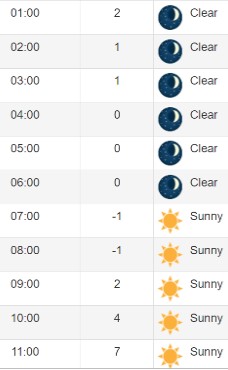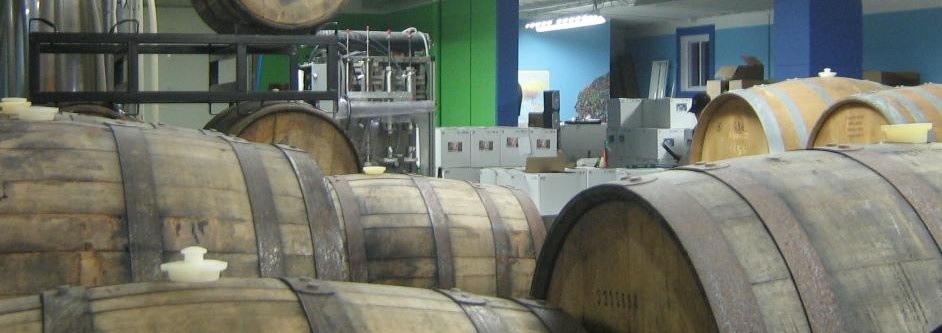Lordy. Is all the holiday cheese finally gone? Is 2024 gone? Really? Check the back of the bottom shelf. Me, I finished off the holidays with a Covid needle in my left arm and a flu shot in my right. I’d rather have had the cheese. So perhaps a short post today, given me with the low grade fever and insomnia and all you all getting over eating the Yuletide cheeses. We should declare this International Solid Dairy Hangover Week. Whatever it is, it’s all going to be OK as it’s just twenty-five days to Truck Day! Yup. Gonna be OK.
 So… The Session. The toe in the water revival edition of The Session. Hmm… there has been a wave of tremendous excitement over the experimental revival of The Session, as announced last week, after a seven year break. Stan, Maureen and Matthew are among the tremendously excited. What does it mean to you? Well, it is actually all about you – as you do all the work, you scribblers. You write, I list. That’s it! To aid you in your thoughts, I offer this simple graph from 2021, an example of my excellent in thought organization. It was last featured in late 2021 and is an update of one from 2016 but, still, it is very much in the now. Clarity. That’s what it sets out. Clarity. Hopefully this will give you that extra push to set out your thoughts on 31 January on the question of the month: “What is the best thing to happen in good beer since 2018?“* Most any medium accepted. Subject to arbitrarty post-facto interventions, of course.
So… The Session. The toe in the water revival edition of The Session. Hmm… there has been a wave of tremendous excitement over the experimental revival of The Session, as announced last week, after a seven year break. Stan, Maureen and Matthew are among the tremendously excited. What does it mean to you? Well, it is actually all about you – as you do all the work, you scribblers. You write, I list. That’s it! To aid you in your thoughts, I offer this simple graph from 2021, an example of my excellent in thought organization. It was last featured in late 2021 and is an update of one from 2016 but, still, it is very much in the now. Clarity. That’s what it sets out. Clarity. Hopefully this will give you that extra push to set out your thoughts on 31 January on the question of the month: “What is the best thing to happen in good beer since 2018?“* Most any medium accepted. Subject to arbitrarty post-facto interventions, of course.
What else is going on? Just after the deadline last week, Jordan shared his thoughts on the brewing of beers under license and just how much, at least in Ontario, the beer that is licensed is the beer that is brewed:
It happened gradually. I can’t tell you the date, but I know that it was Jamie Drummond that brought it to my attention. He had been a lifelong Lowenbrau drinker, and a dedicated one at that. He got in touch one day to point out that it didn’t taste right. Of course it didn’t. It was being brewed in London, Ontario at Labatt. Now, this was nothing new. They’d been brewing Stella Artois in London, Ontario for a while… Over time, I began to get the sense that the walls were pushing in on the import section. One year, maybe 2019, I added Spaten to the beer styles course at George Brown as the ur-example of Munich Helles, but as soon as I opened the can it was wrong. I hadn’t noticed that it was 473 ml, but I surely noticed the difference in aroma within seconds. You guessed it: London, Ontario.
Speaking of things not being what they were… is Facebook going the way of Twitter. I caught this mention of the uselessness of FB ads now for local audiences:
At least in the US, ads used to be excellent for small, local bars/restaurants. Affordable and very effective. I actually liked a lot of the ads I saw. Then they raised the prices and showed them to people from thousands of miles away. So now only shady crap merchants see any value in using them.
No shady crap in The Guardian‘s a great piece this week on getting snowed in, storm stayed, at Britian’s highest pub in most northern Yorkshire:
…the team are well prepared. Their electric power comes from a generator and there is enough food for about a month, “but hopefully it won’t come to that” says Nicole Hayes, one of the bar staff, who has done a number of phone interviews with local and national media in the run-up to the weather warning, such is the reputation of the pub… Word came through that the snow gates on the nearby A66 were being closed at 10.30pm, which meant anyone hoping to leave needed to make their attempt very soon or they were likely to be here for a couple of days, as the snow was forecast to only get worse.
Less placid is the battle being wage for the beer buck of America. Kathleen Willcox wrote these words that really one couldn’t imaging being puslished not that long ago:
… lagers and traditional styles are often priced a dollar or two cheaper than competing styles,” Varda notes. “In a world of inflation and particularly among younger consumers who may have less financial stability, those dollars make a real difference.” Amid rising inflation, craft beer just doesn’t seem like a priority. Especially as brewers themselves grapple with ever-increasing prices for goods like packaging and transportation, and are forced to pass the increases on to customers…. Some brewers even wonder if craft beer is settling into a new, more permanent rut.
Permanent Rut!! Jings. But at least things are reasonably civil, right? What’s that? How about the beer trade dispute, discussed in TDB, occurring in one of the new year’s potential hot spots:
Lawmakers have accused Chinese brewers exporting their products to Taiwan of engaging in unfair trade practices by receiving subsidies from the Chinese government, according to the Taipei Times. The Taiwan Brewers Association, made up of the country’s six biggest brewers, called on the government to launch an investigation into cheap beer imports from Mainland China. Finance Minister Chuang announced this week that the government is set to launch a probe into low-priced Chinese beer. The proportion of the Taiwanese beer market made up of Chinese beer brands has increased from just 8% in 2015 to a current market share of 34%.
Ron had an interesting post at the end of last week on the role of used beer in the 1970s. Used beer?
…pretty much everyone was up to blending in various types of rubbish. Even when brewing the beers I loved, like Tetley’s Mild. Which, according to the brewery’s Specifications Manual, could be up to 12.5% “stabilised beer”. Let’s not kid ourselves. There was a lot of recycled beer in the pints we so happily slurped back in the 1970s. Whether it happened at the pub or in the brewery, you were lucky if it was the first time around for all of the beer in your glass. In a Tetley’s pub with handpumps, it might be as little as 80%. And still I loved it.
Note #1: on the US Surgeon General’s advice, actually you can be advised to eat ice cream by medical specialists as one family member was so… not the same… at all. I mean I get that it’s those in the drinks trade posing as medical experts who doth protest but, let’s be honest, if you are going to mention alcohol’s positives of social interaction and relaxation and not weigh that against the negative like the social ills of drunk driving, violence and squandered family budgets you’re not really doing actual analysis. What is that sort of writing called?** Less suspect is this piece called “Why Drink?” by Matt Gross:
It’s not, of course, that alcohol has suddenly become dangerous. The scientific consensus, however, has evolved over the last several years, away from the idea that moderate drinking is harmless or can even have some health benefits, and toward the understanding that no amount of alcohol is helpful. This, too, is not necessarily new. As far back as I can remember, I’ve known alcohol was a poison: After all, that’s how it was described in 1980s X-Men comics by Wolverine, who drank copiously to almost no effect. And poison, as we all know, is bad for you.
Note #2: Matt still drinks regardless. And Kate Bernot forecasts much of the same sort of non-decision decision making: “I don’t think we’re going to see population-level dramatic shifts in alcohol consumption.” But we read beer is on the decline in the US, even turning unpopular… though not in France. Still, CNN is projecting major alcohol firms will be betting otherwise, taking evasive action:
A December report from IWSR, a leading drinks analysis firm, said that the non-alcoholic drinks global market is “experiencing a transformative period of growth, driven by evolving consumer behaviors and the momentum of no-alcohol.” The trend, to be led by the United States, is expected to grow by $4 billion by 2028 in the firm’s forecast. Non-alcoholic drinks are even “skewing younger than the core buyer demographic across markets, and demonstrate higher frequency and intensity of consumption,” signaling that there’s a sustained thirst for booze-less beverages.
So how do we unpack all that up there. We enter 2025 to a cacophany of contrasting complaint. How does one sort through it all? I came across an interesting concept this week: “the asymmetry of journalism.” It was in an article in The Times about columnist Fraser Nelson in his early days as a business reporter:
Every day, companies release financial results and reporters write a report, perhaps interview them. Smaller firms are lucky to be sent anyone at all, so even a 22-year-old dogsbody is treated like a VIP. The CEO meets you; it’s his job to sell his story, yours to be sceptical.*** Yes, he runs a £100 million company and you’re a chancer with no expertise, but that’s the asymmetry of journalism.
So we need to rely on those voices who provide informed skepticism. Chancer or otherwise. Ms. Mather recommended a new writer to me, something I am also always going to follow up upon and take the chance. In Drinking in Strange Places at the and of last week, Charlotte Cook wrote about Zoigling including this fundamental fact:
In these Zoigl towns, however, you can still turn up to a strangers house, sit in his living room, and for the very reasonable price of €2,40 per beer, have as many pints as you care to imbibe, often with the whole family chipping in to serve beer and small snacks
Never the chancer, Martin posted an interesting and rather old school set of thoughts on his blog’s stats:
844 posts last year, just a series of diary entries with a pub visit and a rummage around an unsung UK town, with the odd bit of tourism and weird stuff during lockdown. Despite COVID, the conclusion to the quest to complete the Beer Guide that dominated the diary, and a general sense that blogging is past its peak, visitor numbers have been oddly consistent.
Which means this. Blogging? Not in a permanent rut. Unless A.I. takes over. Maybe it has already. How can you be sure I am actual me? Is this “Al” or “A.I.”? The Beer Nut, still calling in from Brazil, can always tell:
I’ll spare you my usual rant about the bad AI-generated artwork on Third Barrel’s cans. Suffice it to say, they’re still at it, and it still looks cheap and terrible. I had built up quite a collection of their beers late last year, through no particular reason, and got to work on them last month.
And in Pellicle, we read that there is more stout going on in Ireland than we are reading about in the medias. In fact, there is cult stout as Eoghan Walsh explains:
With less than 100 independent breweries now active in Ireland, it’s easy to forget the significance of this achievement, and just how different the beer scene was that leann Folláin debuted into in the late 2000s. John and Liam remember. They remember when spotting the bright green glow of an O’Hara’s tap badge through the window of a pub was like a lighthouse beacon in a storm. It’s too easy to underestimate the impact of that kind of durability in an industry where attention spans are increasingly short, and business plans not much longer. To paraphrase Stalin, sometimes longevity has a quality of its own.
Finally, in 2050 I will be 83… err… 87 years old so I do not give one shit as to what the beer trade will look like then. I’ll just want to know that there will be Red Sox game on my screen and plenty of oxygen in the tank I wheel around behind me. Jeff, however, took up the challenge and postulated… sorta:
The title of this post is slightly misleading, I confess, because in thinking 25 years ahead, I immediately had to consider 25 years ago. What has changed? Depending on how you look at it, twenty-five years is both a huge amount of time and not much at all. We went from fighting wars with horses to dropping nuclear bombs in 25 years (more or less). On the other hand, Snoop Dogg released an album 25 years ago, and he’s still on 73% of the ads I see during football games. In other words, some things change a lot more than we think, and others far less.
I am not going to say that is a tremendouly robust analysis… but I am sitting in a chair next to a stack of my CDs and LPs so maybe there’s a point to where he’s going.
That big picture or the long game, for me, sums up the opportunity of any writer whether news, history or even poetry. But the key word up there is still “skeptical” as the quality of the good writing will be defined by something like Keats’ negative capability. Be neither booster or bland. That’s it. Maybe. Let’s see you roll some of that out for The Session, wudja?
There. Done. Now, please check out Boak and Bailey every Saturday and Stan going strong again each and every Monday. Then listen to Lew’s podcast and get your emailed issue of Episodes of my Pub Life by David Jesudason on the (sometimes even but never) odd Fridays. And Phil Mellows is at the BritishBeerBreaks. Once a month, Will Hawkes issues his London Beer City newsletter and do sign up for Katie’s wonderful newsletter, The Gulp, too. The Share looks to be back with a revival. Ben’s Beer and Badword is out there with the all the sweary Mary! And check out the Atlantic Canada Beer Blog‘s weekly roundup. There is new reading at The Glass which is going back to being a blog. Any more? Check out the Beer Ladies Podcast. That’s quite good and they are revving up for a new year. And the BOAS podcast for the bro-ly. And the long standing Beervana podcast …except they have now stood down. Plus We Are Beer People. The Boys Are From Märzen podcast appears suspended as does BeerEdge, too. VinePair packed in Taplines as well. All gone. But not Ontario’s own A Quick Beer. There is more from the DaftAboutCraft podcast, too. All About Beer has sponsored trade possy podcasts and there’s also The Perfect Pour. Plus follow the venerable Full Pint podcast. And the Craft Beer Channel on Youtube. The Moon Under Water is gone which is not surprising as the ask was $10 a month. Pete Brown’s one cost a fifth of that but only had the one post. Such is life.
*Find a sunny happy tale even if, as Beer Marketers’s Insights noted, 2024 was unkind to craft: “Volume declined for the 3d year in a row and 4th year outta 5, CBN estimates, on track to finish ~4 mil bbls below its peak in 2019. This also marks the 6th straight year of share loss in off-premise scans. Craft beer held nearly 12 share of $$ in 2018 Circana multi-outlet + convenience channels. This year it’s down to just 10 share of $$ YTD thru Dec 1. The category’s taking hits from every angle. Distribs continue to shift attention toward other categories. Craft bottle sales remain one of the biggest drags on segment sales, down double digits again in 2024. Craft can growth slowed tho continues to gobble up share. Keg volume is declining again this year, disproportionately impacting craft. Taproom volume is on track to decline for the 2d year in a row, TTB data suggests. More breweries closed than opened this yr, Brewers Assn estimates.” Yikes.
**Up there with the scoffing while basically affirming sort of response.
***As opposed to kissing up to your commissioning editor… again!



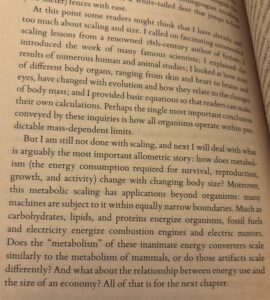

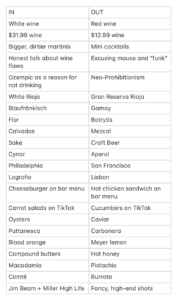
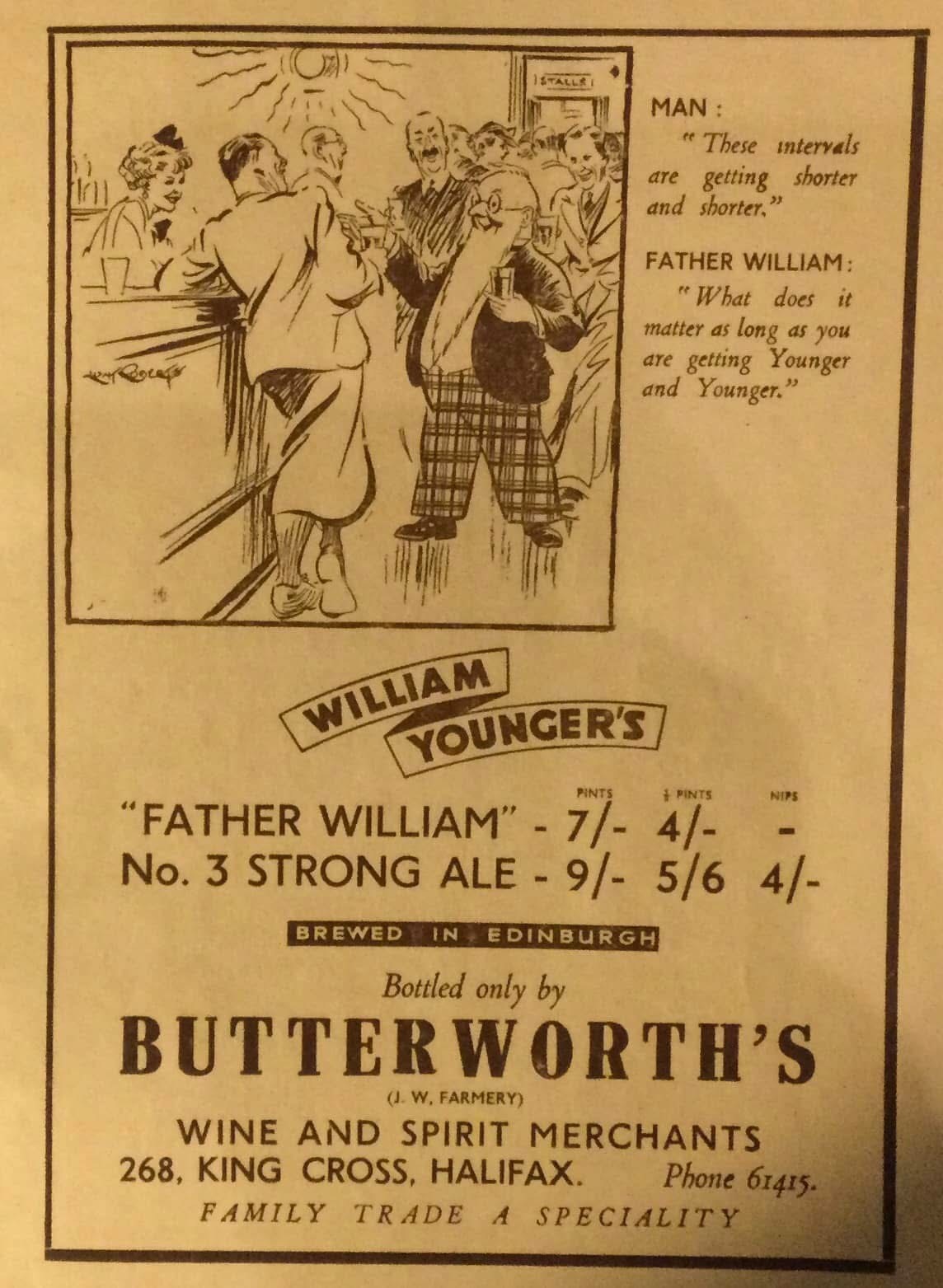

 My top tipple of the last ten days, in case you were wondering, has been
My top tipple of the last ten days, in case you were wondering, has been 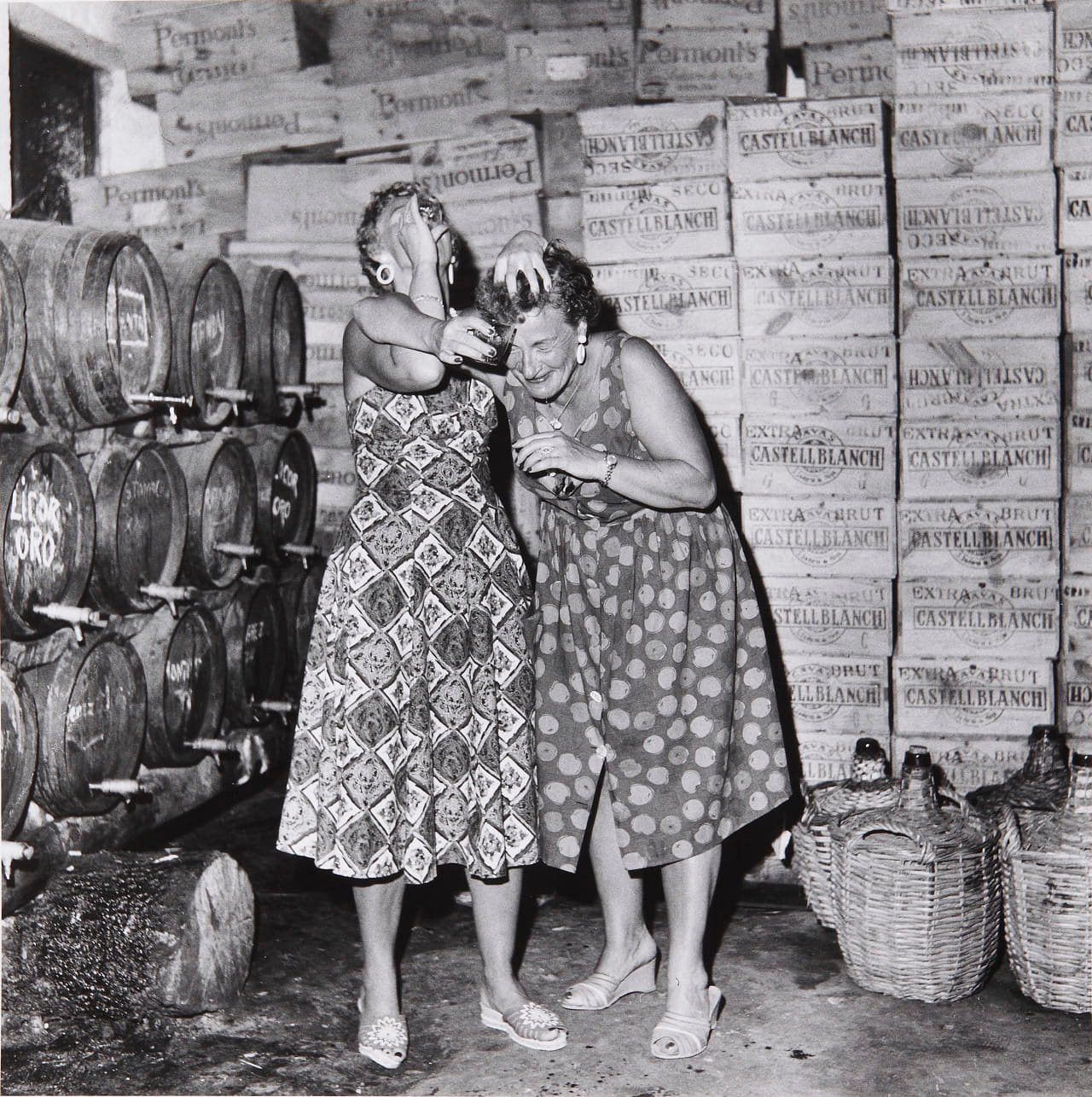 Fine. Almost festive. Almost. But this is when the slide starts to feel greased. Five weeks to Boxing Day. Whoooo! The Boxing Day carols shall ring out loud around the Boxing Day leftover casserole once again!! The most wonderful time of the year
Fine. Almost festive. Almost. But this is when the slide starts to feel greased. Five weeks to Boxing Day. Whoooo! The Boxing Day carols shall ring out loud around the Boxing Day leftover casserole once again!! The most wonderful time of the year
